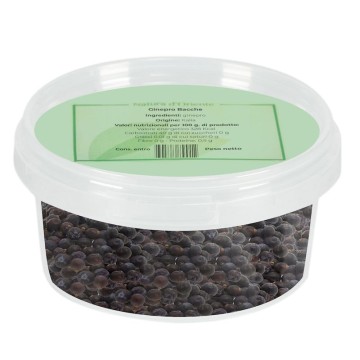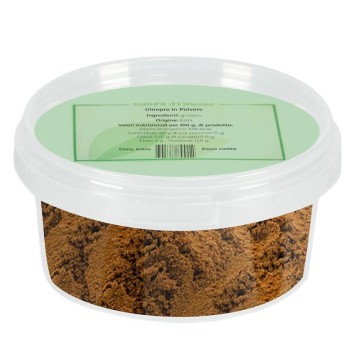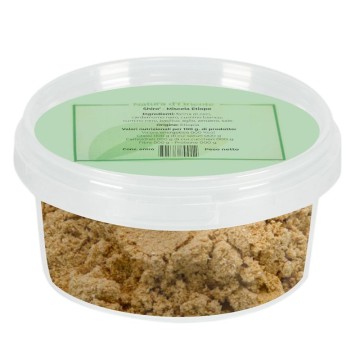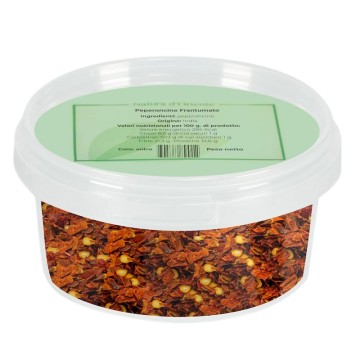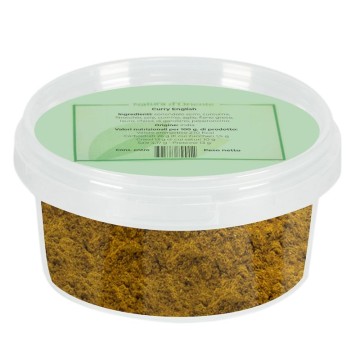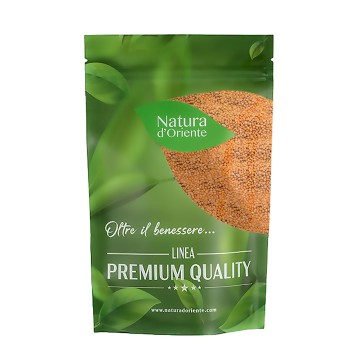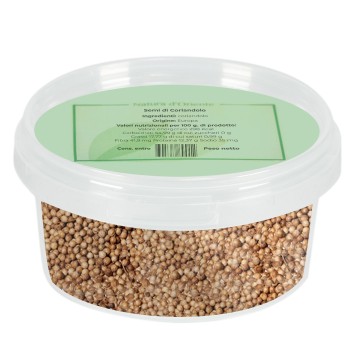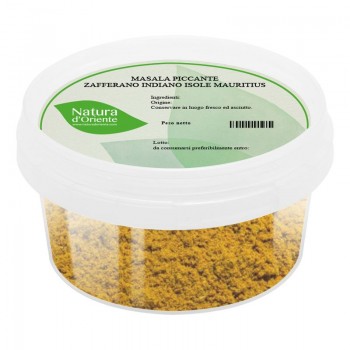This typical Lucanian product is now appreciated beyond the regional borders and sought after for its particularity. The crusco pepper represents the dried version of a delicious variety of pepper, which is grown and then dried to make it even tastier. Crusco means crunchy, because the fruit acquires this particularity once dried and fried - its delicate flavor is enhanced in the fried foods of the local cuisine. It is the crunchiness that makes this pepper unique in the most famous or refined recipes. Furthermore, the crunchy consistency of the crusco peppers transforms them into perfect snacks for any time of the day. If once part of the gastronomic heritage of Basilicata, today this pepper becomes a tasty ingredient that goes well with all cuisines. In particular ground, when it becomes a decidedly unique Mediterranean spice.
What are the properties of the Italian crusco pepper?
Its taste characteristics are those of a sweet pepper, only slightly pungent, with an intense flavor caused by the low percentage of water present. A peculiarity that makes it perfect for drying, together with the fact that its pulp and peel are very thin. Another peculiarity is that, even after drying, the stalk will hold tightly to the pepper, maintaining its shape. Nutritionally, the crusco pepper contains a high dose of vitamin C, excellent among the many varieties of Capsicum, and also makes available vitamin A and various mineral salts typical of peppers. Being dried, it shows a good concentration of potassium, phosphorus, magnesium, zinc, manganese - with few calories.
How to buy our dried crusco pepper
It is a particular pepper, not easy to find everywhere since it represents a typical product of Italian Lucanian cuisine. If you want to buy dried crusco peppers, the online store Natura d'Oriente is the ideal site. In our e-shop you can find crusco peppers for sale, ready for delivery in various freshness-saving packages, with variable weights of 50g, 100g and 250g. You will discover an excellent price for these peppers and other loose spices.
How to use crusco peppers in the kitchen
First of all, it is important to keep the peppers whole, without washing them or soaking them in water. They should be cleaned with a dry cloth, removing the stem. They will then be used for cooking or for chopping, as desired. Typical recipes usually fry (more like scald) the dried crusco peppers in boiling oil, first cutting them into 2-3 pieces and removing the seeds. An oil that can be extra virgin olive oil, seed oil or peanut oil is used, usually reserved only for crusco peppers – which otherwise could take on other flavors. The pepper is fried for a few seconds, maximum 2-3, to prevent it from blackening and taking on a bitter taste. The oil will immediately swell it, ready to be removed from frying. It will be important to drain it with a paper towel and, at that point, the temperature range will make it crunchy (crusco), perfect for using as a side dish. Dried crusco pepper can also be chopped to appreciate its fragrance and make it, like a spice, a useful element for flavoring dishes and some foods. The powdered version takes the dialect name Zafaran’ (red saffron), and is also used for its preservative properties for typical Lucanian cured meats.
In which recipes should dried crusco pepper be used?
Savory recipes: it can be used as a side dish, in potato and vegetable dishes. It is used on risotto or pasta sauces, crumbled in sauce, also for pasta and bean recipes and the classic pasta with garlic, oil and chilli. It can be chopped into fillings, and to flavour legumes, soups, vegetables, broths. Delicious on scrambled eggs, frittatas and omelettes. It is ideal for enriching salads, chopped or whole, combined with lettuce, tomatoes, olives and seeds. Exquisite in the preparation of cheeses, it can be combined with soft fresh cheese spread on bruschetta and piadina.
Baked products: in the chopped version it is excellent for enriching the flavour and colour of dough products such as pizza, focaccia, crackers, breadsticks, etc.
Sauces and gravies: reduced to powder, the crusco pepper can be used for the preparation of sauces, spreadable creams, delicious for flavouring mayonnaise or hummus. Its flavor pairs well with sauces for bread, bruschetta, sandwiches, as well as gravies for meat and fish. The sweet and delicate flavor integrates well with ragù and tomato sauces, giving flavor without adding spiciness.
Meat: exquisite when paired with veal, the crusco pepper can be chopped and added to the ground meat for hamburgers. It is used for the preparationtion of Lucanian cured meats and sausages, also as a natural colorant and preservative. Excellent flavoring on grills and in marinades, it garnishes roast meat and grilled fish with a crunchy taste.
Lucanian cuisine: the tradition of Basilicata makes different recipes with crusco peppers, combined with potatoes, with cod, or with veal; cruschi can create a crunchy final garnish. Among the first courses, it is used for the typical pasta with cruschi peppers, for strascinati, in orecchiette with turnip tops.
Desserts: in the ground form it can be used to flavor chocolate and ice cream, similarly to chili pepper.
Snack: Cruschi peppers are also considered as a tasty snack with bread or fried eggs, or simply on their own for an effect similar to crunchy snacks, crackers or chips, with a slight pungent touch.
The Recipe: Spaghetti with crusco peppers
Ingredients:
300 g of spaghetti - 1 garlic - 6 cruschi peppers - Extra virgin olive oil - salt and pepper to taste - 1 handful of parsley - breadcrumbs (from about 1/3 of a loaf) Preparation
Blend the breadcrumbs, divide the garlic into cloves and chop the parsley. Pour the oil into a small pan and add a clove of garlic. Brown the breadcrumbs. Take another pan, pour in plenty of oil, add a clove of garlic and wait for it to reach frying temperature; blanch the cruschi peppers for a few seconds, until they are swollen. Drain them immediately on absorbent paper and set them aside. Put the water to boil, in the meantime put the chopped parsley in the pan in the oil of the breadcrumbs. Clean the cooled cruschi peppers, removing the seeds, and then crumble them with your hands. Drain the pasta al dente, and pour the spaghetti into the pan to finish cooking, immediately adding the crumbled cruschi peppers. Plate and create a finish with the fried breadcrumbs and parsley.
Crusco pepper: origin and history
The plant belongs to the Capsicum genus, originating from the American continent and now widespread throughout the globe. There are over 80 varieties, including the typical peppers of Basilicata where the crusco comes from - the variety of this plant has been cultivated since the seventeenth century. It is a small pepper, with an intense red color and an elongated shape similar to that of the hot chili pepper, and can be hooked, pointed or truncated. Unlike chili peppers, however, this variety of pepper is sweet and delicate. It is usually harvested in August, and then stored for three days on large cloth sheets. According to the traditional drying method, the pepper braids called serte are then produced, tied with string. About 2 meters long, the serte are hung to facilitate the drying phase. It will be necessary to wait until the water inside the pulp has almost completely evaporated, reaching about 10%. This artisanal processing of the crusco pepper takes place using air and sun, although a possible passage in the oven is permitted. This is how the cruschi peppers were born, which were once widespread only in the production areas between the provinces of Potenza and Matera. Today it represents an ingredient that is conquering Italian tables and chefs, and is appreciated both in the dried pepper version and as crusco pepper powder, used like a spice. The custom of grinding peppers dates back to the period of cultivation, in the seventeenth century, to enhance its conservation even out of season; in addition, it also maintained nutritional properties such as vitamins and mineral salts. Historically there is a reference to Hungarian paprika, but the fine grain of crusco pepper and its persistent aroma gave it the dialect name of Zafaran, recalling saffron. In ancient times, grinding was done with a stone mill, beating it by hand in a mortar.
Crusco pepper, what are the contraindications?
This pepper has no particular contraindications, but if consumed in excess it can lead to unwanted effects especially at the gastrointestinal level. Consumption in excessive doses is not recommended for those suffering from irritable bowel syndrome, ulcers, hemorrhoids and digestive disorders (it can cause bloating and reflux).




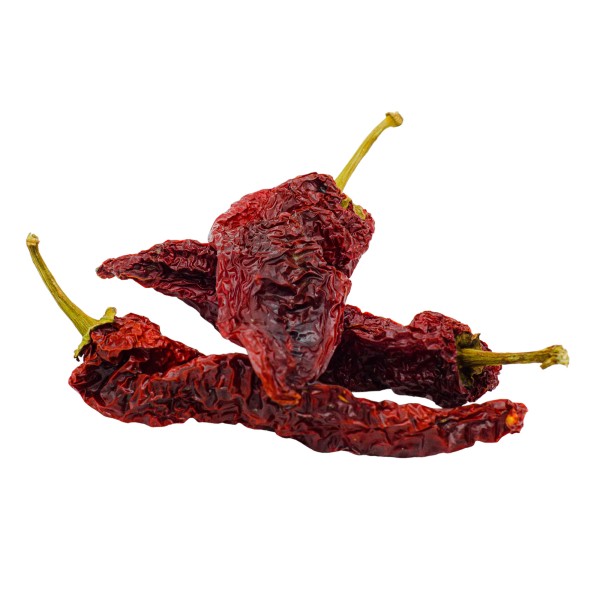








 No reward points for this product.
No reward points for this product.




